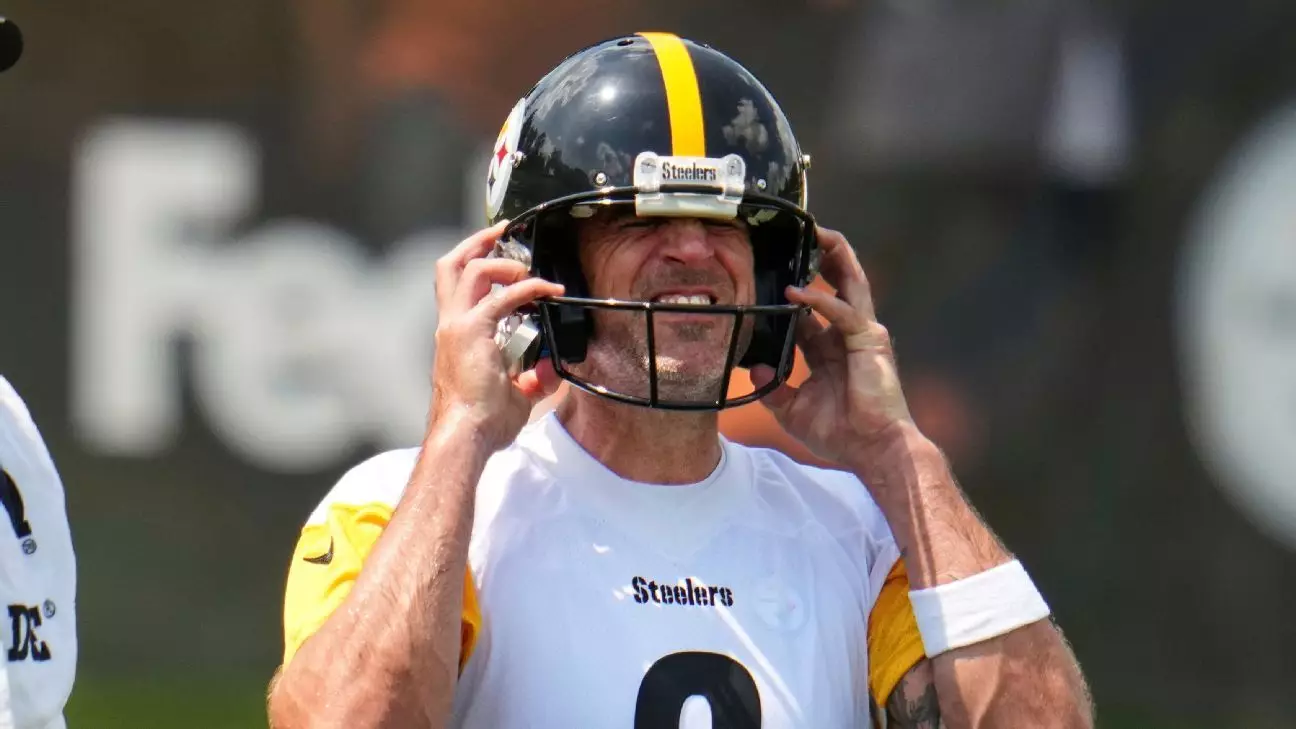In professional football, innovation often comes with obstacles, and few athletes demonstrate the resilience required to adapt better than Aaron Rodgers. His recent transition from the beloved Schutt Air XP Pro Q11 LTD helmet to a newer, mandated model highlights a broader challenge in NFL safety protocols: balancing tradition and player comfort with rigorous safety standards. Rodgers’ vocal dissatisfaction underscores a significant tension in the sport—players are expected to perform at optimal levels, but sometimes, equipment upgrades hinder their comfort and confidence.
Rodgers’ candid remarks about the aesthetic and functional discomfort caused by the new helmet reveal an often overlooked aspect of sports technology: human acceptance. When athletes are accustomed to certain gear, abrupt changes threaten not only their comfort but their mental readiness. His description of the helmet looking like a “damn spaceship” isn’t just humor; it reveals a deeper unease, a struggle to reconcile safety with familiarity. Such frustrations are emblematic of a larger cultural tension within football: how to introduce safer equipment without sacrificing the player’s psychological comfort or game-day flow.
This scenario spotlights an essential dialogue in sports innovation: design and user experience must be prioritized alongside safety statistics. Rodgers’ experience serves as a critical case study for manufacturers and league officials, emphasizing that technological progress must consider athlete feedback. Resistance to change isn’t just about personal preference; it’s about ensuring that safety improvements don’t come at the expense of performance and confidence. The NFL faces a pivotal challenge—how can it enforce safety upgrades while maintaining an environment in which players feel fully themselves?
Resilience in the Face of Uncertainty: Players’ Physical and Mental Battles
Modern football players are constantly battling injuries, and Rodgers’ recent scare underscores how fragile their comeback narratives can be. His encounter at practice, where he was stepped on but quickly returned to action, demonstrates the brutal reality of returning to peak performance after injury. The visible scrapes and his walk-off, grimacing and massaging his calf, paint a vivid picture of the physical toll athletes endure behind the scenes.
What’s remarkable is Rodgers’ attitude—he downplays the incident but emphasizes his readiness to push through pain. His mental toughness is evident in his willingness to adapt to uncomfortable gear and keep fighting despite adversity. Yet, such resilience often masks the underlying vulnerability that professional athletes carry. The pressure to perform—especially in a new team environment—can push players to the brink physically and emotionally, risking burnout or more severe injuries. Rodgers’ situation encapsulates the double-edged sword of high-level sports: relentless resilience paired with potential for overexertion.
Similarly, even as Rodgers manages his helmet frustrations and physical setbacks, a new wave of emerging quarterbacks faces their own hurdles. Will Howard’s freak injury, an accidental finger break during a routine practice play, exemplifies how unpredictable football injuries can be. His candidness about the pain and restrictions reveals a stark reality—young players, essential to the league’s future, are vulnerable just as much as veterans, often with less experience in handling setbacks.
Howard’s injury, though seemingly minor, disrupts the traditional narrative of injury recovery. Wearing an immobilizer and uncertain about return dates, he faces a “week-to-week” prognosis that tests his mental fortitude. His resolve to stay ready, despite being sidelined, signifies an understanding that football is a marathon, not a sprint. This mindset, combined with the physical rigor of recovery, signals a broader cultural shift among NFL players—emphasizing mental resilience alongside physical endurance as a key to longevity.
Future Challenges and Lessons for the League
As the NFL navigates the complexities of player safety, equipment innovation, and injury management, stories like Rodgers’ and Howard’s serve as catalysts for meaningful conversations. It’s clear that technological advancements in sports gear should not come at the expense of athlete comfort or confidence. The league and manufacturers must collaborate, fostering innovations that meld safety with biomechanics that athletes can readily accept and prefer.
Moreover, the mental resilience exhibited by players confronting tough injuries and equipment adjustments highlights a crucial aspect of professional sports: mental health and psychological readiness are just as vital as physical rehabilitation. The league’s responsibility extends beyond the field—creating environments where players can voice frustrations and adapt without feeling alienated or overwhelmed.
In the long run, NFL teams might need to prioritize individualized approaches to safety gear, acknowledging that a one-size-fits-all solution could hinder performance or well-being. The evolving landscape of football safety also demands a culture that embraces change, listening to players’ feedback and integrating it into future innovations.
The stories of Rodgers, Howard, and other emerging quarterbacks reveal a league at a crossroads—where safety, resilience, and adaptation are intertwined. These narratives are more than just about injuries or equipment—they are about redefining what it means to be a resilient athlete in a sport that constantly pushes its physical and mental limits. The NFL’s future depends on how effectively it can balance these demands, fostering an environment where players feel both protected and empowered to perform at their best.

